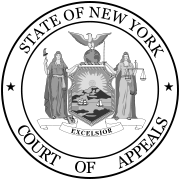
Trimarco v. Klein
Encyclopedia

New York Court of Appeals
The New York Court of Appeals is the highest court in the U.S. state of New York. The Court of Appeals consists of seven judges: the Chief Judge and six associate judges who are appointed by the Governor to 14-year terms...
dealing with the use of custom in determining whether a person acted reasonably given the situation. It is commonly studied in introductory U.S. Tort Law
Tort
A tort, in common law jurisdictions, is a wrong that involves a breach of a civil duty owed to someone else. It is differentiated from a crime, which involves a breach of a duty owed to society in general...
classes.
Facts
Trimarco (P) appealed an order which reversed a judgment in favor of P and dismissed P's complaint in a negligenceNegligence
Negligence is a failure to exercise the care that a reasonably prudent person would exercise in like circumstances. The area of tort law known as negligence involves harm caused by carelessness, not intentional harm.According to Jay M...
action for personal injuries
Personal injury
Personal injury is a legal term for an injury to the body, mind or emotions, as opposed to an injury to property. The term is most commonly used to refer to a type of tort lawsuit alleging that the plaintiff's injury has been caused by the negligence of another, but also arises in defamation...
.
P was severely injured when he fell through the glass door enclosing his tub in his apartment he was renting. It was not possible for P or his wife to determine if the glass was tempered or just ordinary glass. After the accident, the glass was found to be just ordinary glass. P sued Klein (D), his landlord, for the injuries. At trial
Trial
A trial is, in the most general sense, a test, usually a test to see whether something does or does not meet a given standard.It may refer to:*Trial , the presentation of information in a formal setting, usually a court...
, P introduced expert evidence about the custom and usage of tempered glass from 1956 to 1976. Since at least the early 1950s, a practice of using shatterproof glazing materials for bathroom enclosures had come into common use, so that by 1976 the glass door here no longer conformed to accepted safety standards
Safety standards
Safety standards are standards designed to ensure the safety of products, activities or processes, etc. They may be advisory or compulsory and are normally laid down by an advisory or regulatory body that may be either voluntary or statutory...
. P also showed that over this period bulletins of nationally recognized safety and consumer organizations along with official Federal publications had joined in warning of the dangers that lurked when plain glass was utilized in "hazardous locations", including "bathtub enclosures". Over objection, the trial court also allowed in sections of New York's General Business Law, which, as of July 1, 1973, required, on pain of criminal sanctions, that only "safety glazing material" be used in all bathroom enclosures. D's managing agent admitted that, since at least 1965, it was customary for landlords who had occasion to install glass for shower enclosures, to replace the glass with "some material such as plastic or safety glass". P was given the verdict by the jury
Jury
A jury is a sworn body of people convened to render an impartial verdict officially submitted to them by a court, or to set a penalty or judgment. Modern juries tend to be found in courts to ascertain the guilt, or lack thereof, in a crime. In Anglophone jurisdictions, the verdict may be guilty,...
. The appellate division reversed the decision awarding P damages; D was under no common law
Common law
Common law is law developed by judges through decisions of courts and similar tribunals rather than through legislative statutes or executive branch action...
duty to replace the glass unless he had prior notice of the danger. P appealed.
Judgment
The question asked was, does custom and usage per se fix the scope of the reasonable person standard?The response of the court was, custom and usage is highly relevant evidence related to the reasonable person standard but it does not per se define the scope of negligence.
Fuchsberg J gave the following decision.

